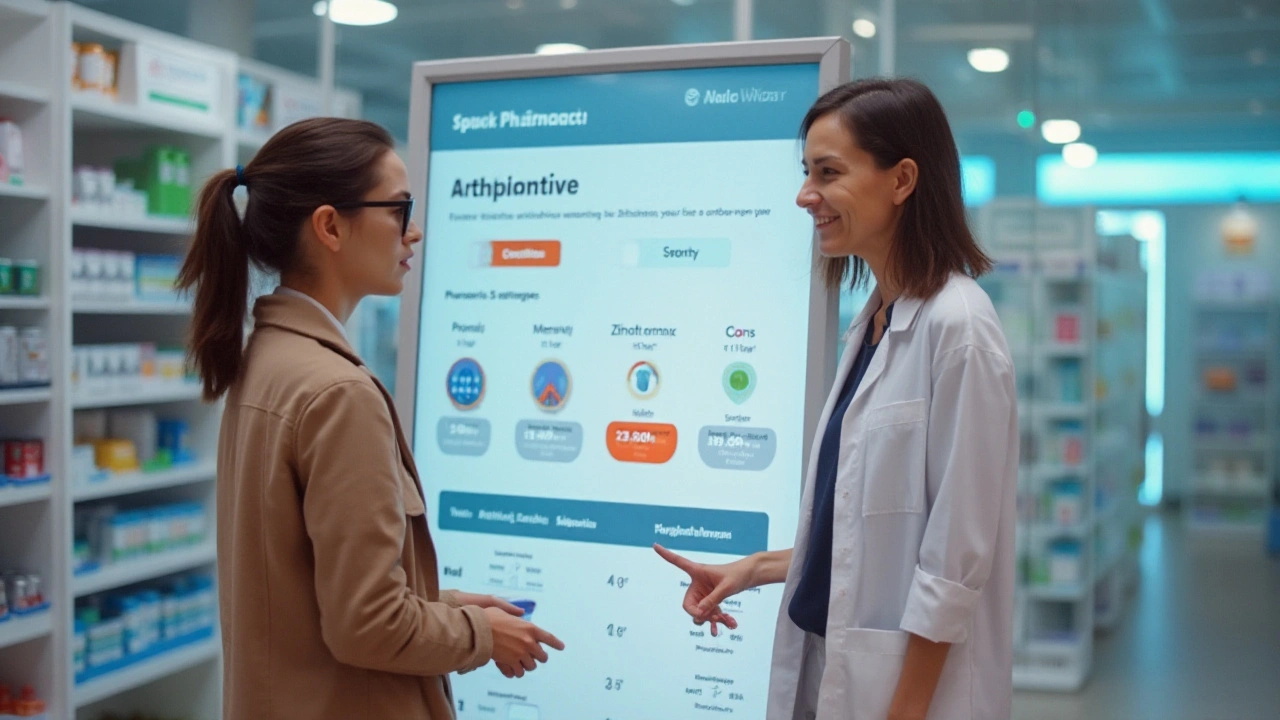Antibiotics: what they treat and how to use them safely
Antibiotics save lives, but they only work against bacteria — not viruses like the flu or common cold. Use them the right way and they’ll help you recover fast. Misuse, though, can cause side effects and fuel antibiotic resistance, which makes future infections harder to treat.
There are many kinds of antibiotics. Some you hear about a lot: amoxicillin (often for ear, throat, and sinus infections), azithromycin (short courses for some respiratory infections), doxycycline (skin and tick-related infections), and ciprofloxacin (certain urinary and GI infections). Doctors pick one based on the likely bacteria, where the infection is, and your allergy history.
When you should take antibiotics
Only take antibiotics when a healthcare provider prescribes them. If your symptoms are clearly viral — runny nose, sore throat with cough, or most bronchitis cases — antibiotics won’t help. Your doctor may use tests (like urine or throat swabs) to confirm a bacterial infection before prescribing. If they do prescribe, follow their instructions exactly: dose, timing, and how long to take it.
Stopping early because you feel better might leave some bacteria alive and increase resistance. That said, modern guidance sometimes recommends shorter courses for certain infections — but only if your doctor says it’s okay. Always ask before changing the plan.
Side effects, interactions, and special situations
Common side effects include stomach upset, diarrhea, and yeast infections. Serious reactions like anaphylaxis (severe allergy) are rare but urgent — get emergency care if you get hives, swelling, trouble breathing, or fainting. Some antibiotics interact with other drugs: blood thinners, some heart medicines, and oral contraceptives can be affected. Tell your prescriber about all medications and supplements you use.
Pregnancy and kids need special attention. Not every antibiotic is safe in pregnancy or for infants. If you’re pregnant, breastfeeding, or treating a child, ask the clinician for options known to be safe for that situation.
Want to reduce the chance of antibiotic-related diarrhea? Ask about probiotics (strain matters), take antibiotics with food if allowed, and avoid unnecessary broad-spectrum antibiotics when a narrow option will work.
If you buy medications online, be cautious. Use licensed pharmacies, require a prescription, check for clear contact info, and avoid deals that look too good to be true. DoctorAlexa has guides on spotting legit online pharmacies and on safe ordering practices.
Bottom line: antibiotics are powerful tools when used correctly. Ask questions, check interactions, follow the prescribed course, and don’t expect them to treat viruses. If symptoms worsen or you get worrying side effects, contact your healthcare provider right away.

Top 10 Zithromax Alternatives for Effective Treatment
Explore viable alternatives to Zithromax for treating bacterial infections. This article provides a thorough comparison of different antibiotics that can serve as substitutes, offering insight into their pros and cons. Learn about safe options, their effectiveness, and potential side effects to make an informed decision alongside medical advice.
More Detail
Top 10 frequently asked questions about Norfloxacin
In our latest blog post, we delve into the top 10 frequently asked questions about Norfloxacin, a common antibiotic. We cover everything from its main uses in treating bacterial infections, to potential side effects and whether it's safe for everyone. We also answer questions about the correct dosage and how to take it properly. Furthermore, we discuss its interactions with other medications and foods. Lastly, we look into what to do if you miss a dose or take an overdose of Norfloxacin.
More Detail